handicraft stall @ Chiangrai night bazaar, run by an Akha lady from Ban Ruammitr, a Karen village that has secured its place on e tourist map for its elephant camp & location by e Kok river that flows all e way from adjacent Chiangmai province:

[ photo by YK ]
is this (below) by Hmong people?
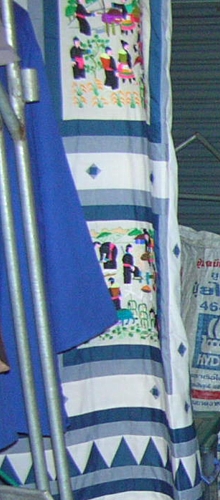
[ photo by YK ]
think these dolls are supposed to be attired as Lisu, judging from e tops they are wearing:
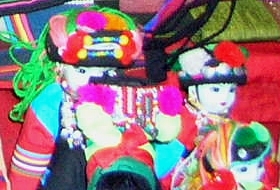
[ photo by YK ]
but Lisu ladies' headdresses look more like this ;)
hats for babies & young kids:
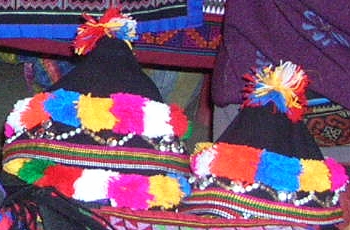
[ photo by YK ]
Lomi Akha adult lady's headdresses with e characteristic silver spheres (two on left) & kid's headdresses (middle two):
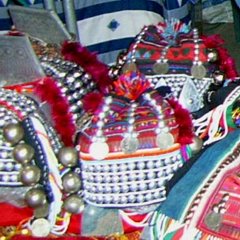
[ photo by YK ]
Akha design blankets - cross-stitch patterns (left) & e more traditional patterns (right):
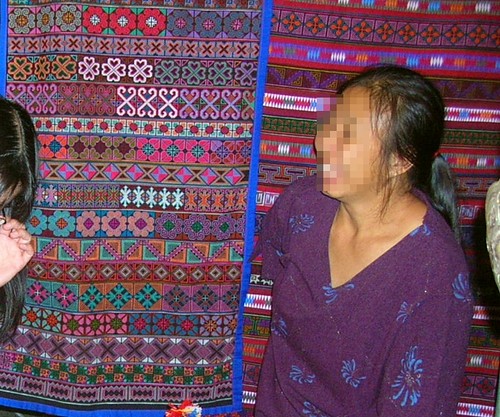
[ photo by YK ]
Akha shoulder bags (below) Fangus, this is where your bag came from ;)

[ photo by YK ]
e one at bottom left is a 'vintage' bag, made from cloth woven from threads spun & dyed indigo using traditional methods, & patterns put together by stitching tiny pieces of coloured cloth - much harder & more time-consuming than cross-stitching. e rest are made from factory mass-produced black cloth that doesn't fade easily & feels smoother. ironically e Akha think that e 'vintage' bags are worth much less (because they feel 'rougher'?) & price them lower than what they are really worth....
some of e traditional patterns:
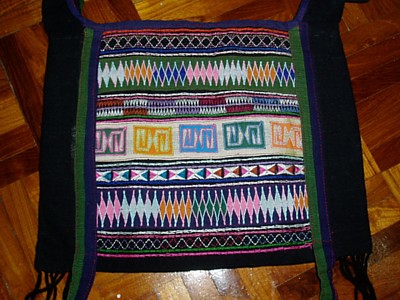
above bag was bought from a young guy who sells Akha handicrafts made by himself & his mum at e night bazaar - e only Akha guy we have met who has such an interest in sewing & takes real pride in his handiwork =)
e Akha may not have a written language, but e many types of applique shapes (referred to as butterfly's tongue?) & patterns of stitches speak volumes, symbolising various things important to their lives e.g. animals, houses, fertility, water, drums etc:
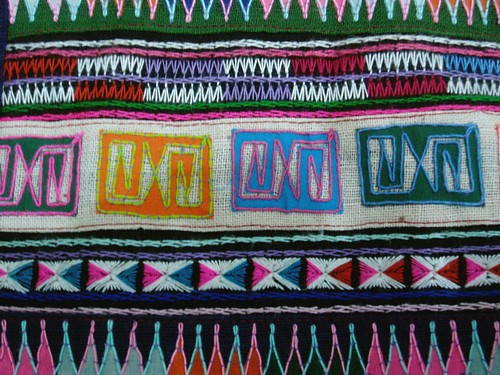
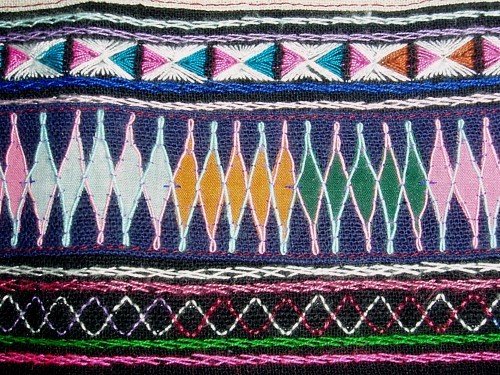
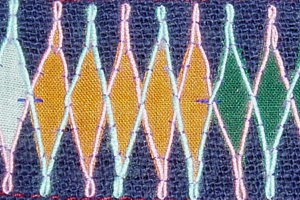
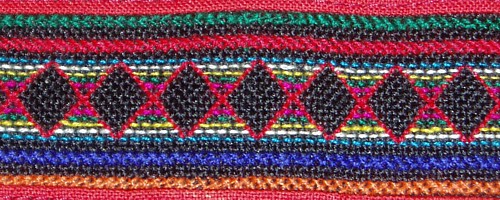
e Akha have their own names for e various types of stitches (centipede, flower, snake stripes, moon & sky, etc), like e 4 rows here that have each 'forward slash' crossing over two 'back slashes':
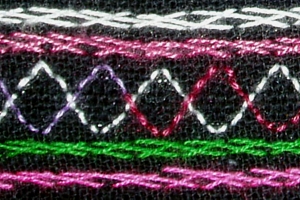
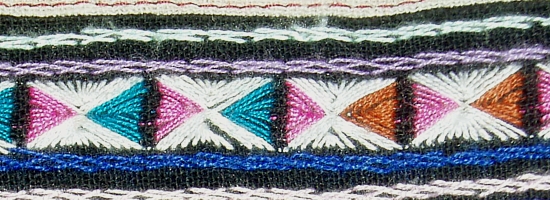
some of e Christian-ised Akha include crucifixes in their designs, while some of e younger ones have started including 'modern' symbols like hearts ;)
this mother & son pair add little extra touches like sewing on zips for e shoulder bags that they make. e lady owner of a nearby well-established handicraft wholesale & retail store told us that he has accepted orders from some of her customers to custom-make certain items.
e wholesale & retail store has wares sourced from faraway places like Nagaland, a production centre in Wiang Pa Pao, & sells some products in Singapore through Homespun. e cat has been to e ground floor outlet of Homespun in e Arts House @ Old Parliament twice, but didn't come across any Akha handicrafts, although there was Hmong stuff. according to a former French colleague, there is a shop in Queensway Shopping Centre called One Tree Hill that sells Akha stuff, but haven't had e chance to check it out....
bag made by Ata (JC girls' host mother during e expedition), an U-Lo Akha from Ban Apa in Mae Yao, bought from her in Ban Apa in 2004:
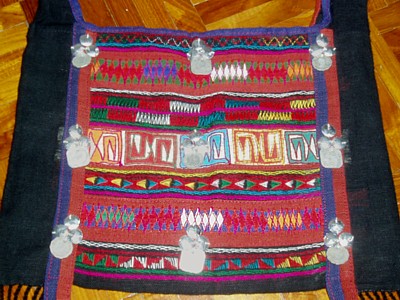
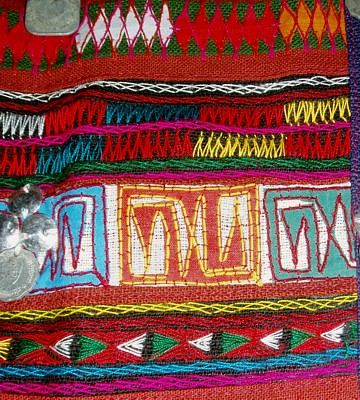
this sort of applique is what Lomi Akha are famous for:
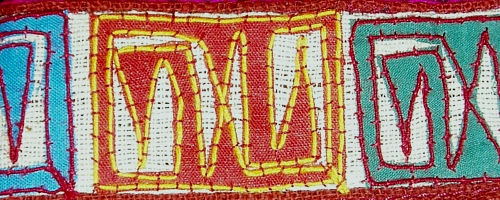
this pattern symbolises chicken (yeh3 ji1 - sounds like Mandarin for 'wild chicken') feet:
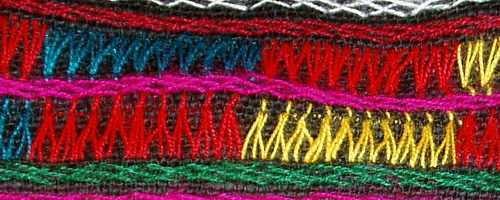
Ata is totally devoted to her craft, & it is a joy to watch her at work =) she showed us how thread is spun using e Akha drop spindle & how dyed chicken feathers are made into tassels for their headgear. wonder how much of this knowledge will survive beyond her generation? e French researcher whom e cat observed a year ago interviewing Ata & recording down e names of e various types of stitches & applique patterns probably knows more than e youngsters in e village do....

No comments:
Post a Comment